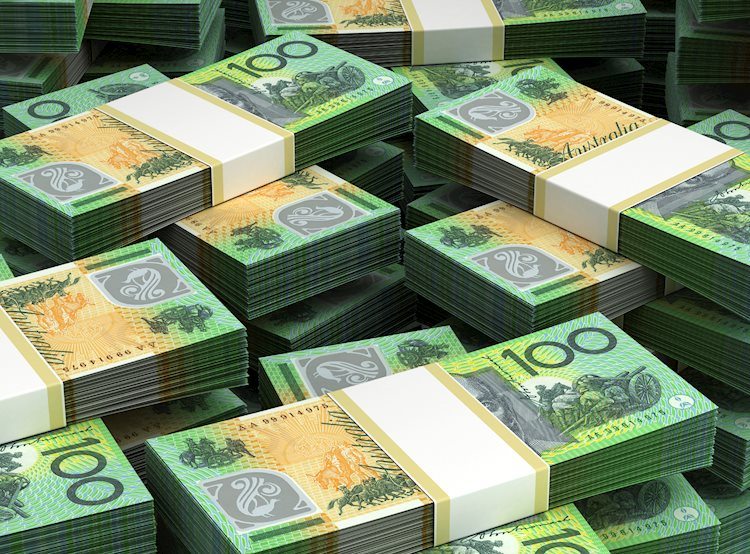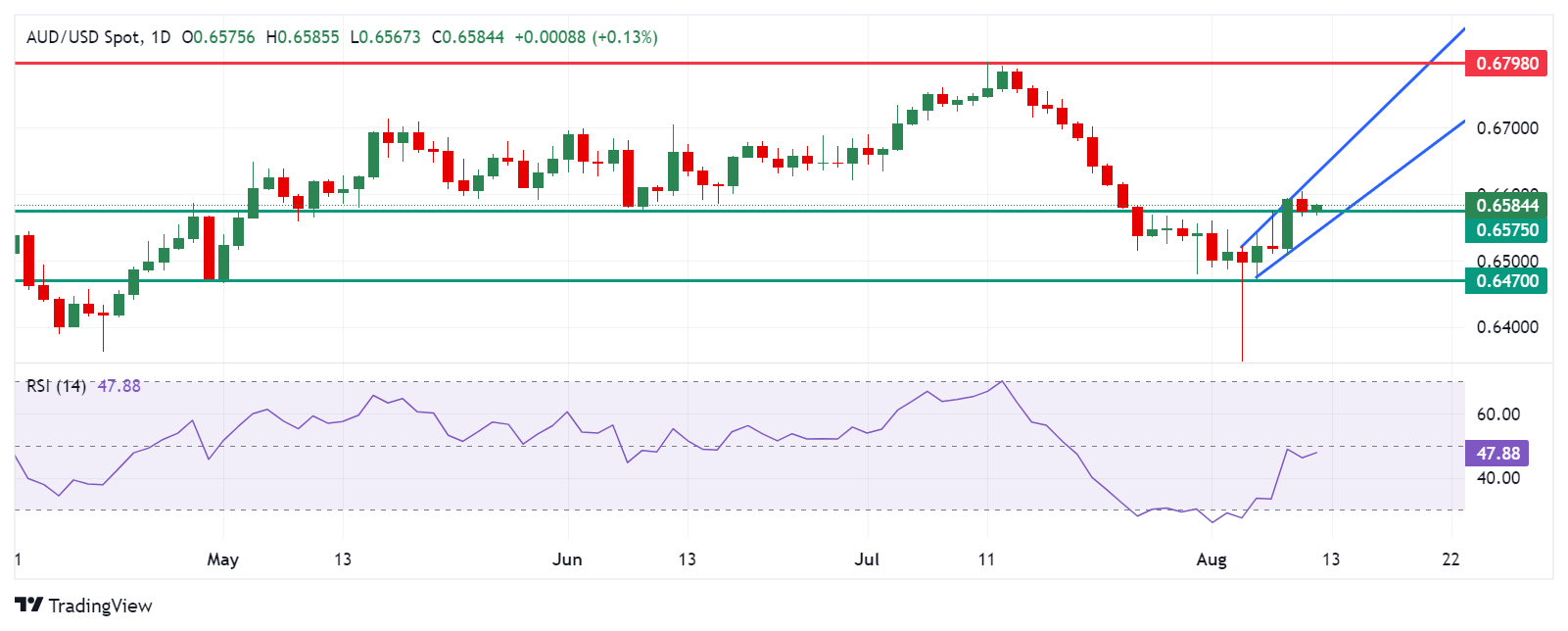- The Australian Dollar appreciates as the RBA may increase rates again if needed.
- The safe-haven flows may limit the upside of the AUD amid escalated Middle-East tensions.
- Fed Governor Michelle Bowman suggested that the US central bank may not be prepared to cut rates in September.
The Australian Dollar (AUD) retraces its recent losses against the US Dollar (USD) on Monday. The AUD/USD pair appreciates due to the hawkish sentiment surrounding the Reserve Bank of Australia (RBA). Additionally, the upbeat inflation in China, a close trade partner with Australia, might have provided support for the Aussie Dollar.
RBA Governor Michele Bullock highlighted last week the importance of remaining cautious regarding inflation risks and expressed that the central bank will not hesitate to raise rates again to combat inflation if needed. Those comments came just days after the RBA held rates steady at 4.35% for the sixth straight meeting.
On the USD front, market expectations for a potential interest rate cut by the Federal Reserve (Fed) in September could put pressure on the US Dollar (USD), potentially providing support for the AUD/USD pair.
Investors will likely focus on US producer inflation data set to be released on Tuesday and consumer inflation figures on Wednesday. Traders are looking for confirmation that price growth remains stable.
Daily Digest Market Movers: Australian Dollar rises due to a hawkish RBA
- The upside of the risk-sensitive AUD could be restrained due to safe-haven flows amid increased geopolitical tensions in the Middle East. On Sunday, Defense Minister Yoav Gallant informed US Defense Secretary Lloyd Austin that Iran’s military activities indicate preparations for a significant strike on Israel, as reported by Axios writer Barak Ravid.
- On Sunday, Federal Reserve Governor Michelle Bowman stated that she continues to see upside risks for inflation and ongoing strength in the labor market. This suggests that the Fed may not be prepared to cut rates at their next meeting in September, according to Bloomberg.
- China’s Consumer Price Index (CPI) rose 0.5% year-on-year in July, exceeding the expected 0.3% and previous 0.2% readings. Meanwhile, the monthly index also increased 0.5%, swinging from the previous decline of 0.2%.
- Westpac updated its RBA forecast, now predicting the first rate cut will occur in February 2025, a shift from the previously anticipated November 2024. They also revised their terminal rate forecast to 3.35%, up from the previous 3.10%. The RBA is now viewed as more cautious, needing stronger evidence before considering rate cuts.
- On Thursday, Kansas City Fed President Jeffrey Schmid stated that reducing monetary policy could be “appropriate” if inflation remains low. Schmid noted that the current Fed policy is “not that restrictive” and that while the Fed is close to its 2% inflation goal, it has not yet fully achieved it, per Reuters.
- Last week, Treasurer Jim Chalmers contested the RBA’s view that the economy remains too robust and that large government budgets are contributing to prolonged inflation, according to Macrobusiness.
- RBA Governor Michele Bullock mentioned that the board had seriously considered increasing the cash rate from 4.35% to 4.6% due to ongoing concerns about excess demand in the economy. Additionally, RBA Chief Economist Sarah Hunter noted that the Australian economy is performing somewhat stronger than previously anticipated by the RBA.
Technical Analysis: Australian Dollar hovers around 0.6600, aligns with throwback support
The Australian Dollar trades around 0.6590 on Monday. The daily chart analysis shows that the AUD/USD pair is positioned within an ascending channel, indicating a bullish bias. Meanwhile, the 14-day Relative Strength Index (RSI) is consolidating below the 50 level. A move above this level could suggest a strengthening of bullish momentum.
In terms of resistance, the AUD/USD pair may test the upper boundary of the ascending channel at the 0.6630 level. A breakout above this level could propel the pair toward the region near its six-month high of 0.6798.
On the downside, the AUD/USD pair may find immediate support at the throwback level of 0.6575. A drop below this level could reinforce a bearish bias, potentially pushing the pair toward the lower boundary of the ascending channel around 0.6540. Additional support is seen at the throwback level of 0.6470.
AUD/USD: Daily Chart
Australian Dollar PRICE Today
The table below shows the percentage change of Australian Dollar (AUD) against listed major currencies today. Australian Dollar was the strongest against the Japanese Yen.
| USD | EUR | GBP | JPY | CAD | AUD | NZD | CHF | |
|---|---|---|---|---|---|---|---|---|
| USD | -0.03% | 0.03% | 0.24% | -0.01% | -0.11% | -0.14% | 0.00% | |
| EUR | 0.03% | 0.09% | 0.24% | 0.01% | -0.19% | -0.10% | 0.05% | |
| GBP | -0.03% | -0.09% | 0.41% | -0.07% | -0.28% | -0.19% | -0.03% | |
| JPY | -0.24% | -0.24% | -0.41% | -0.24% | -0.41% | -0.37% | -0.25% | |
| CAD | 0.01% | -0.01% | 0.07% | 0.24% | -0.15% | -0.12% | 0.05% | |
| AUD | 0.11% | 0.19% | 0.28% | 0.41% | 0.15% | 0.09% | 0.25% | |
| NZD | 0.14% | 0.10% | 0.19% | 0.37% | 0.12% | -0.09% | 0.16% | |
| CHF | -0.01% | -0.05% | 0.03% | 0.25% | -0.05% | -0.25% | -0.16% |
The heat map shows percentage changes of major currencies against each other. The base currency is picked from the left column, while the quote currency is picked from the top row. For example, if you pick the Australian Dollar from the left column and move along the horizontal line to the US Dollar, the percentage change displayed in the box will represent AUD (base)/USD (quote).
RBA FAQs
The Reserve Bank of Australia (RBA) sets interest rates and manages monetary policy for Australia. Decisions are made by a board of governors at 11 meetings a year and ad hoc emergency meetings as required. The RBA’s primary mandate is to maintain price stability, which means an inflation rate of 2-3%, but also “..to contribute to the stability of the currency, full employment, and the economic prosperity and welfare of the Australian people.” Its main tool for achieving this is by raising or lowering interest rates. Relatively high interest rates will strengthen the Australian Dollar (AUD) and vice versa. Other RBA tools include quantitative easing and tightening.
While inflation had always traditionally been thought of as a negative factor for currencies since it lowers the value of money in general, the opposite has actually been the case in modern times with the relaxation of cross-border capital controls. Moderately higher inflation now tends to lead central banks to put up their interest rates, which in turn has the effect of attracting more capital inflows from global investors seeking a lucrative place to keep their money. This increases demand for the local currency, which in the case of Australia is the Aussie Dollar.
Macroeconomic data gauges the health of an economy and can have an impact on the value of its currency. Investors prefer to invest their capital in economies that are safe and growing rather than precarious and shrinking. Greater capital inflows increase the aggregate demand and value of the domestic currency. Classic indicators, such as GDP, Manufacturing and Services PMIs, employment, and consumer sentiment surveys can influence AUD. A strong economy may encourage the Reserve Bank of Australia to put up interest rates, also supporting AUD.
Quantitative Easing (QE) is a tool used in extreme situations when lowering interest rates is not enough to restore the flow of credit in the economy. QE is the process by which the Reserve Bank of Australia (RBA) prints Australian Dollars (AUD) for the purpose of buying assets – usually government or corporate bonds – from financial institutions, thereby providing them with much-needed liquidity. QE usually results in a weaker AUD.
Quantitative tightening (QT) is the reverse of QE. It is undertaken after QE when an economic recovery is underway and inflation starts rising. Whilst in QE the Reserve Bank of Australia (RBA) purchases government and corporate bonds from financial institutions to provide them with liquidity, in QT the RBA stops buying more assets, and stops reinvesting the principal maturing on the bonds it already holds. It would be positive (or bullish) for the Australian Dollar.

